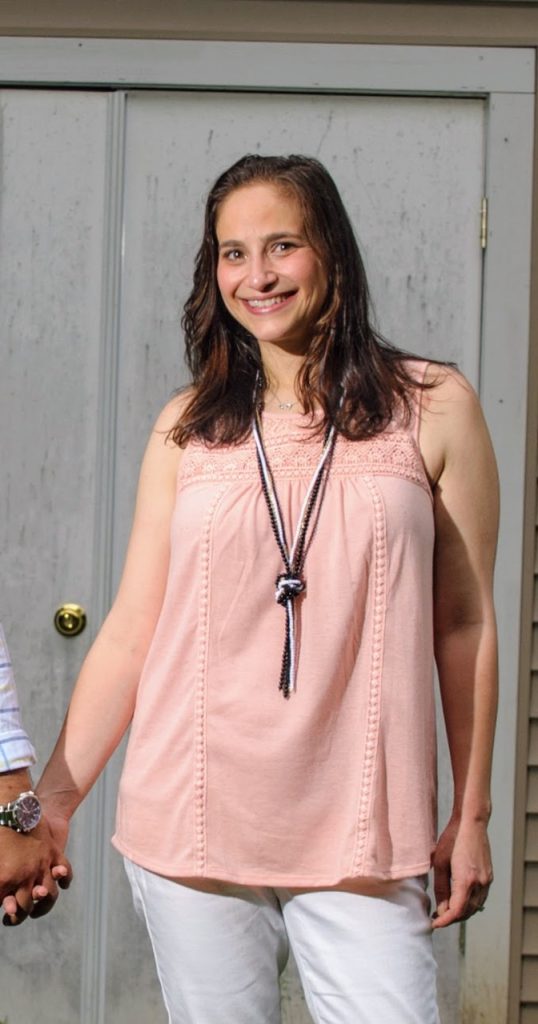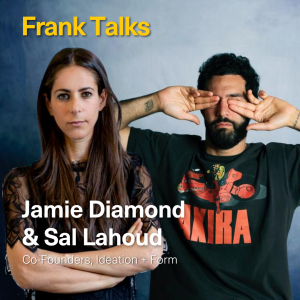We are delighted to bring you this week’s Frank Talk with Sarah Arnett Ordaz! Sarah began her art career in 2005 at Salander-O’Reilly Galleries. In 2007 they shuttered their doors and Sarah moved on as Executive Assistant to Barbara Gladstone at Gladstone Gallery where she remained until 2012. She briefly left the art world for a position as an EA to the CEO of a luxury fashion promoter but quickly realized where she belonged when she returned to the gallery world at Lisson in 2013 as Executive Assistant to Alexander Logsdail. In 2016 Sarah became the Gallery Manager for the New York space which now has grown to 25 employees. She has great advice to share and we hope you enjoy reading Sarah’s Frank Talk below!
What was your first job in the Arts?
I worked the front desk at Salander O’Relly Gallery which was going through a major transition at the time. I started the day after they opened their flagship 25,000 sq. ft location. As some financial problems became clear the staff went from 35 employees down to 9 in a short two-year period. During this time, I gained invaluable experience being promoted to and through Registrar, Archivist, Press, and in the end Larry Salander’s Executive Assistant.
What was the most useful or important thing you learned at that job?
There were a few major takeaways:
- Thick skin is very important
- Develop good relationships with all levels/members of the staff. Comradery in success for your employer is key.
- When something is being asked of you, the answer is always “Yes, of course,” and work as hard as you can to figure the rest out later (often with the help of pre-mentioned colleagues).
- Along those lines – never be afraid to ask for assistance.
- Punctuality, while underplayed, makes a huge difference in showing commitment to whatever role you’re given!
Tell us a little more about yourself. When did you realize you wanted to pursue a career in this industry?
I had no interest in the contemporary art field… I double majored in History and Art History with a minor in European Studies. I was lucky enough to receive a temp position the summer after college working in the HR department at the Guggenheim. After that position had run its course, I interviewed at a Japanese bank’s HR division and Salander O’Reilly…I studied Old Master’s and Salander’s collection was very impressive. They had Dürer, El Greco and Bernini on view to name a few standouts.
What do you do now? I
I am currently the Gallery Manager for Lisson Gallery New York.
Where are you from?
I’m a New York City native.
What is the arts community like there?
Booming/Interesting/Varied.
Has where you come from shaped what you do in the arts today?
Absolutely – my grandmother would pick me up from school and one day every week we would tackle just one room at the Metropolitan Museum of Art. She did it this way so it wouldn’t feel as overwhelming and I developed a great love of museums. Additionally – my brother was a national chess master so my family and I traveled all across the states for his tournaments. While he was playing my parents would take me to all regional museums, we didn’t care much for the chess cheering sections.
What is the best piece of advice you can give about working in the art world?
You have to really love what you do and have a passion for doing it. It’s not for the weak of heart but the benefits of working with/being around art at all times is unbeatable. I left the art world after 8 years only to last 1.5 years before returning to the field I love.
What is one of your greatest accomplishments in your career so far?
My greatest accomplishment would be the transition from an Eldridge Street appointment-only store front for Lisson Gallery to opening two major Chelsea locations within a year. It was my greatest challenge as well and turned into a spectacular accomplishment with the help of the incredible Lisson Team.
What has been a challenge for you?
As I have no formal HR and legal training, I have had to learn a LOT in order to function in the position to which I’ve grown. It’s been an incredible experience and I have learned a tremendous amount in the process. I can never thank Lisson enough for giving me the opportunity to do so.
What is something you do every day at work?
My day to day involves mostly interacting with the staff, seeing the overview from an unbiased perspective and keeping the sense of comradery as a top priority; along with keeping deadlines and general pace of accomplishments.
What is one of the weirdest things you have had to do on the job in your career?
While at Gladstone Gallery during a Matthew Barney performance piece I had to ride in a small van with a couple of heated snakes in the backseat, I hate snakes.
What defines a good employee? What defines a good boss?
This is a tricky one because it’s all so individualized. Attitude has a lot to do with being a good employee. Those who show up on time, avoid office negativity and of course submit good work. As for a good boss, it’s someone who truly cares about their team and is also the hardest working person there.
What do you think makes a person hirable?
It’s hard to say again because you can only cover so much in interviews, but I look for those who are ready to put the work in. I do not accept egos as someone who has had to work my way up, it’s important to know that every position counts and every person needs to put in the effort as and when necessary.
What is your advice to making yourself stand out in your workplace?
This goes to my answer above, stand out employees are the ones who jump in and take action even if it may not be included in their “original job description” Also a positive attitude goes a looong way!
What are things you can do proactively boost your CV?
Taking on internship experience for entry level positions is key. Keep your resume to 1 page if you’ve only had a couple of other positions. The rest is just rambling and that’s not the point of a brief summary of your experience. That’s what the cover letter is for. Be concise and clear.
Are there any tips you can give people entering the workforce?
Start by learning everything you can and ASK questions when you need. No one expects you to jump in knowing all systems and what needs to get done. Keep up a can-do attitude and ALWAYS be open to advice from others.
In your experience, what are things to do and things to avoid during an interview?
Avoid coming in with answers that seem rehearsed. I would like to get to know the actual you!
Any other anecdotes about your experience in the art world that you would like to share?
Not without offending others, but there sure have been a lot of interesting ones…
What is the best exhibition you have seen in the last year?
Biasedly – Hugh Hayden’s Border States at Lisson’s Tenth Avenue space.
If you could own a work by 5 different artists, who would be in your collection?
In no particular order-
Carmen Herrera
Caravaggio
Stanley Whitney
Bernini
Ryan Gander




